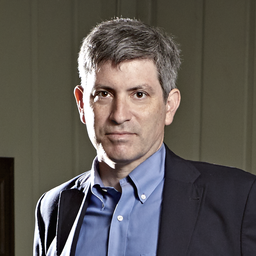
Carl Zimmer
Columnist at The New York Times
Science Writer at Freelance
Writer. My active social media links are here: https://t.co/4YrZwyD2wi
Articles
-
1 week ago |
portside.org | Carl Zimmer
Sunday Science: Shining a Light on the World of Tiny Proteins Published June 15, 2025 You could be forgiven for assuming that scientists know how many kinds of proteins exist. After all, researchers have been studying proteins for more than two centuries. They have powerful tools in their labs to search for the molecules. They can scan entire genomes, spotting the genes that encode proteins.
-
2 weeks ago |
bbc.com | Carl Zimmer
Weather makers: How microbes living in the clouds affect our livesGetty ImagesTrillions of bacteria, fungi, viruses and single-celled organisms travel the globe high in the atmosphere. Scientists are discovering they play a vital role in the weather and even our health. Clouds are our lifelong companions. Sometimes they drift overhead as wispy filigrees. On other days, they darken the sky and dump rain on us.
-
3 weeks ago |
newscientist.com | Carl Zimmer
When we look back over the history of infectious diseases, it’s the explosive pandemics that grab our attention. Cholera and plague terrify us with their swift destruction of cities and the paralysis they cause across whole nations, while the devastation brought about by quieter diseases can be easy to overlook. And perhaps no disease has wreaked more havoc under the radar than tuberculosis.
-
1 month ago |
seattletimes.com | Carl Zimmer
In the winter of 2006, biologists in New York state got a gruesome surprise. As they surveyed colonies of hibernating bats, they discovered heaps of dead animals on the floors of caves and abandoned mines. The culprit was a fungus new to science. It caused white-nose disease, named for the fuzzy pale tendrils that sprouted from the nostrils of its victims. (The disease was originally known as white-nose syndrome, but was renamed in recent years.) The fungus, Pseudogymnoascus destructans, or P.
-
1 month ago |
nytimes.com | Carl Zimmer
OriginsScientists have learned that another species of fungus found in Europe and Asia causes white-nose disease, which has ravaged bat populations in the United States and Canada. A cluster of greater mouse-eared bats hibernating in Poland. Bats in Europe and Asia can tolerate a fungus that has wiped out North American populations. Credit... Sebastien J.
Try JournoFinder For Free
Search and contact over 1M+ journalist profiles, browse 100M+ articles, and unlock powerful PR tools.
Start Your 7-Day Free Trial →X (formerly Twitter)
- Followers
- 281K
- Tweets
- 64K
- DMs Open
- No